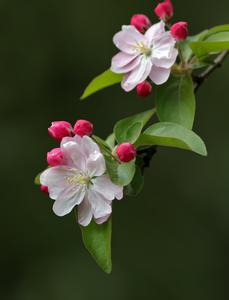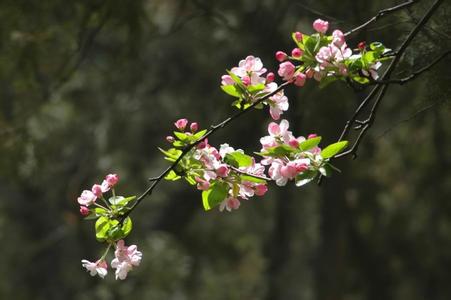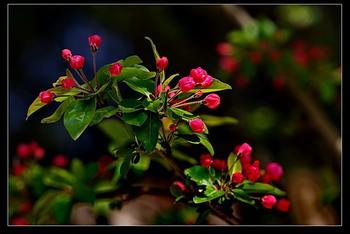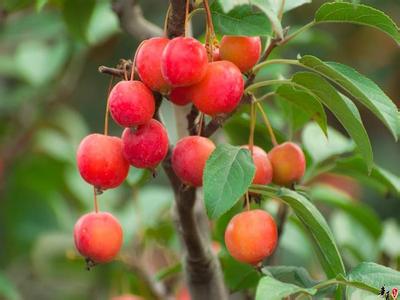West government begonia price
Xifu Begonia is chic and unrestrained, blooming like brocade, it has been a famous flower appreciated by both elegant and popular people since ancient times, and it is known as "immortal in the flower", "flower imperial concubine" and "flower honorable". There are many well-known poems in praise of Begonia in successive dynasties. Lu you's poem said: "although gorgeous but not vulgar, the emperor is really rich." Describe Haitang as gorgeous, beautiful and elegant; in another poem by Lu you: "the scarlet parrot is extremely green, and the stacked calyx is heavy and dazzling." Describe the bright red flowers and green leaves of begonia flowers and the image of luxuriant flowers competing with the rising sun; Liu Zicui's poem in the Song Dynasty said: "the elegant posture makes the spring clear, the plum borrows the romantic willow, and the fragrance of the night rain is still there." it is impossible to paint with rouge "to describe begonia like a quiet lady.

West House Begonia-- Price
Xifu Begonia is mainly used as a garden plant for people to watch, and it is also often used as a tree species for soil and water conservation and greening. Its flowers can also extract aromatic oils; flowers and fruits are used medicinally, which can regulate qi and blood circulation, regulate menstruation and invigorate the spleen; the fruit is edible and can also make jam. Therefore, the performance price of Western begonia which has a certain value is relatively high in the market. generally, the seedling price of Western begonia is about 10 yuan per plant, while the pot price of Western begonia can reach 100 yuan. The price of Begonia on the market generally depends on its own growth.
West House Begonia-- brief introduction
Tripterygium is a plant of the genus Malus in Rosaceae. Its leaves are elliptic to long elliptic, 5-8 cm long and 2-3 cm wide, apex acuminate or obtuse; inflorescences subumbellate, with 5-8 flowers; fruit subglobose, 1.5-2 cm in diameter, yellow, base not sunken, calyx lobes persistent; fruiting pedicel thin, 3-4 cm long, apex slightly fleshy. It is the best product of shrub and a popular product in greening project.

West House Begonia-- habit
Western crabapple likes to grow in places with plenty of light and belongs to sunny and cold-tolerant plants. There is no local taboo on waterlogging and too wet air, but generally speaking, it does not have high requirements for soil quality and moisture, and is most suitable for growing in fertile, loose and well-drained sandy loam. The flowering period is from April to May every year, and the fruiting period is September. And has a certain resistance to harmful gases in the air.

West House Begonia-- Propagation
Grafting: using sown seedlings as rootstocks for branch grafting or bud grafting. The sap flowed and sprouted for branch grafting in spring and budded in autumn (from July to September). Branch grafting can be done by cutting, splitting and so on. The scion selects the fully developed 1-year-old branch, takes its middle section (with more than 2 full buds), then covers the scion with fine soil, and the bud is grafted with the word "T". About 10 days after that, where the bud is fresh, the person who falls in the corner of the petiole is the proof of living, and the binding can be removed after a few days. When the height of the seedling is 80 ~ 100 cm, develop backbone branches, and then only trim dense branches, introverted branches, overlapping branches and maintain a round crown.
Split-plant method: before sprouting in early spring or after defoliation in autumn and winter, the tiller strips sprouted from the rhizosphere were cut into several individual plants, or 2-3 root sprouting strips were transplanted into a cluster. After planting, it should be watered thoroughly in time, pay attention to preserve soil moisture, shade if necessary, and water in case of drought. Soon a new branch can grow from the fracture of the residual root, and the fallen leaves after autumn or before budding in early spring will become an independent new plant.

The Flower language of Begonia Flower in Xifu
The flower language and symbolic meaning of Xifu Begonia: unrequited love
The flowers are colorful and are generally cultivated in the garden for greening. West House crabapple in the crabapple flower tree standing tall, like a pavilion girl. The flowers are red and pink, the leaves are green and lovely, the fruits are delicious and attractive, regardless of isolated planting, arrangement planting, cluster planting are extremely beautiful. It is most suitable to be planted in a corner of the waterfront and small courtyard. In Guo Zhen's Haitang poem, "Zhu Lanming captivates Huangtang, fragrant trees add pillows and short walls." Is the most vivid portrayal. In the new garden, with dark green conifers as the background and Begonia planted in the forefront, its color is particularly eye-catching. If it is planted as a flower hedge, the flowers are in full bloom, magnificent.

[morphological characteristics]
Deciduous trees, up to 8 m tall; branchlets Terete, erect, reddish brown when young, pubescent, dark brown when old, glabrous; leaf blade elliptic to long elliptic, 5-8 cm long, 2-3 mm wide, apex acuminate or obtuse, base broadly cuneate or subrounded, margin closely serrulate, sometimes partially entire, pilose on both surfaces when young, soon glabrescent; petiole 1.5-3 cm long, pubescent Stipules membranous, lanceolate, entire. Inflorescences subumbellate, with 5-8 flowers; pedicels slender, 2-3 cm long, sparsely pilose; flowers 4-5 cm in diameter; calyx tube glabrous or densely pilose outside; calyx lobes triangular-ovate, 3-mm long, shorter or subequal than calyx tube, apex acute, entire, outside glabrous or nearly glabrous, inner surface white tomentose Petals ovate, base shortly clawed, 2-2.3 cm long, white, pink to red at first opening; stamens 20-25 (30), half of petals; style 5, sparse 4, slightly longer than stamens, base white tomentose. Fruit subglobose, 1.5-2 cm in diameter, yellow, base not sunken, calyx lobes persistent; fruiting pedicel slender, 3-4 cm long, apex slightly fleshy. The flowering period is April-May and the fruiting period is September. The fruit of Xifu begonia (begonia fruit).
[morphological characteristics]
Deciduous trees, up to 8 m tall; branchlets Terete, erect, reddish brown when young, pubescent, dark brown when old, glabrous; leaf blade elliptic to long elliptic, 5-8 cm long, 2-3 mm wide, apex acuminate or obtuse, base broadly cuneate or subrounded, margin closely serrulate, sometimes partially entire, pilose on both surfaces when young, soon glabrescent; petiole 1.5-3 cm long, pubescent Stipules membranous, lanceolate, entire. Inflorescences subumbellate, with 5-8 flowers; pedicels slender, 2-3 cm long, sparsely pilose; flowers 4-5 cm in diameter; calyx tube glabrous or densely pilose outside; calyx lobes triangular-ovate, 3-mm long, shorter or subequal than calyx tube, apex acute, entire, outside glabrous or nearly glabrous, inner surface white tomentose Petals ovate, base shortly clawed, 2-2.3 cm long, white, pink to red at first opening; stamens 20-25 (30), half of petals; style 5, sparse 4, slightly longer than stamens, base white tomentose. Fruit subglobose, 1.5-2 cm in diameter, yellow, base not sunken, calyx lobes persistent; fruiting pedicel slender, 3-4 cm long, apex slightly fleshy. The flowering period is April-May and the fruiting period is September. The fruit of Xifu begonia (begonia fruit).
Related
- Wuhan Hospital Iron Tree Blooming Result Was Instantly Frightened by the Gardener Master
- Which variety of camellia is the most fragrant and best? Which one do you like best?
- What is the small blue coat, the breeding methods and matters needing attention of the succulent plant
- Dormancy time and maintenance management of succulent plants during dormancy
- Minas succulent how to raise, Minas succulent plant pictures
- What are the varieties of winter succulent plants
- How to raise succulent plants in twelve rolls? let's take a look at some experience of breeding twelve rolls.
- Attention should be paid to water control for succulent plants during dormant period (winter and summer)
- Watering experience of twelve rolls of succulent plants
- Techniques for fertilizing succulent plants. An article will let you know how to fertilize succulent plants.



